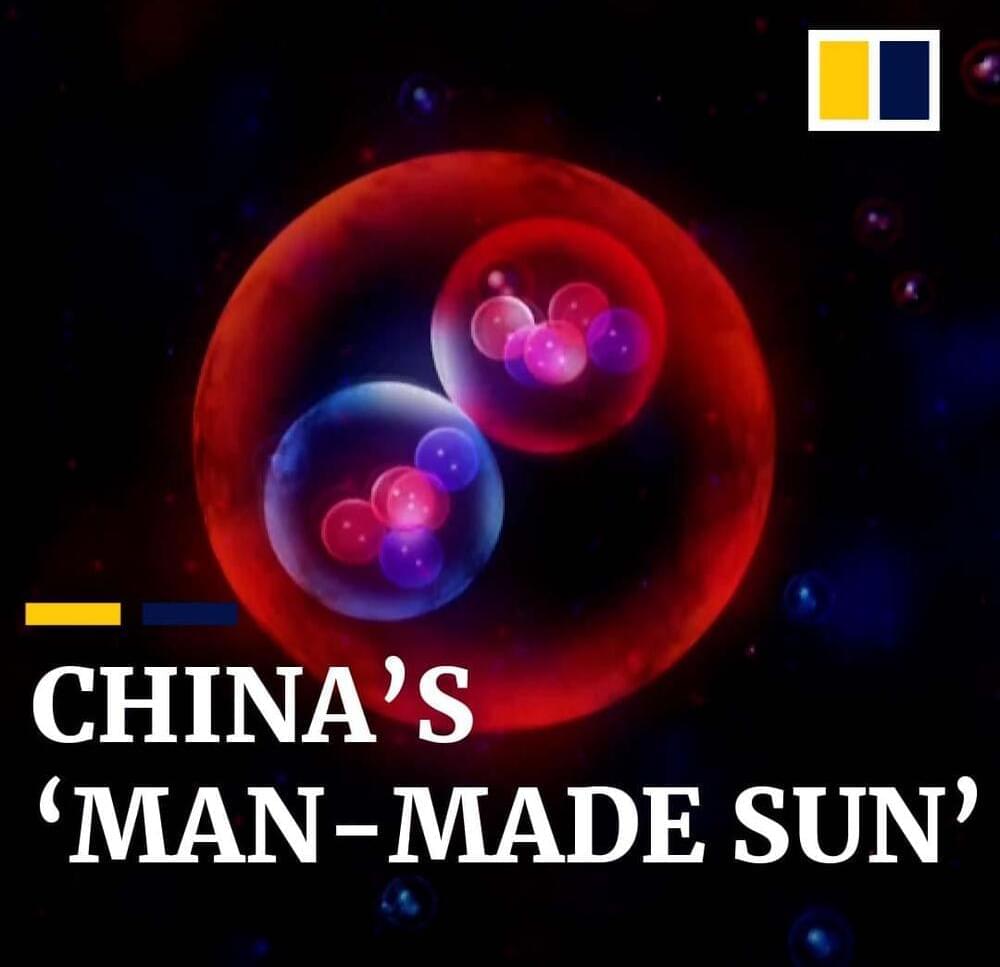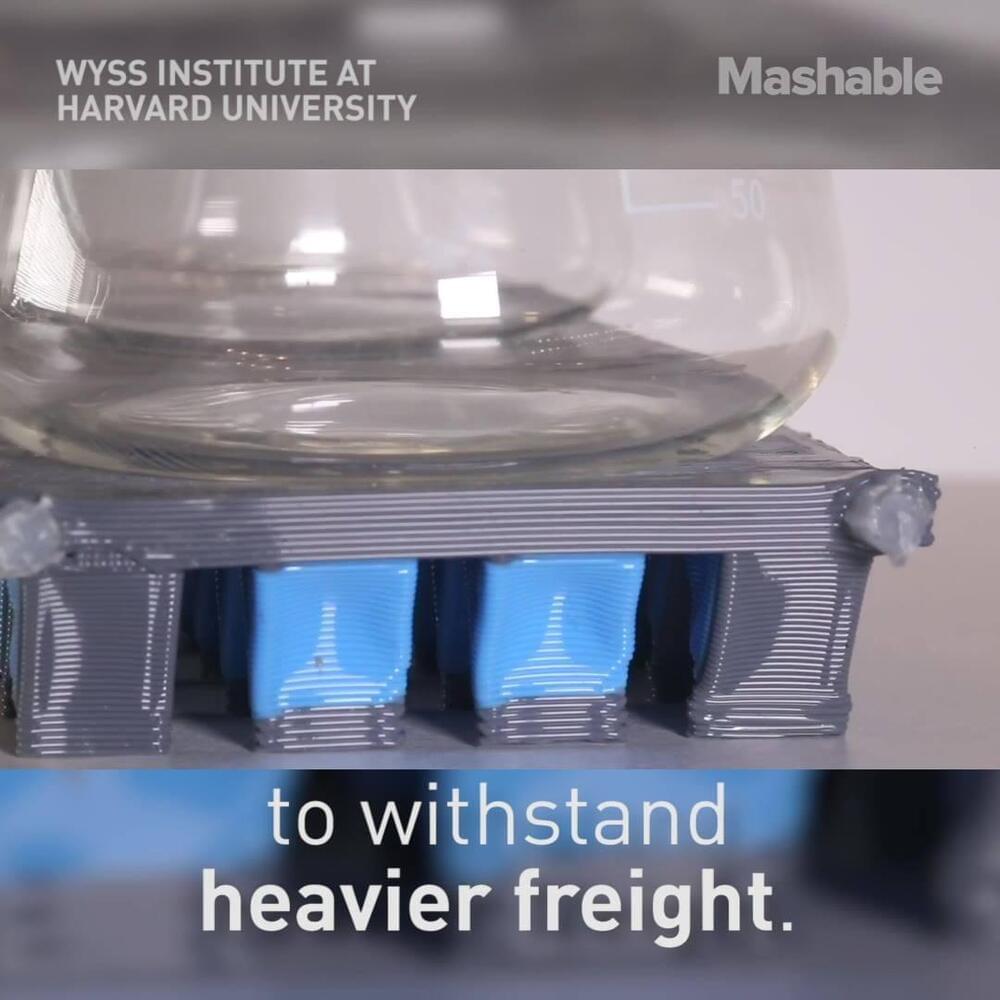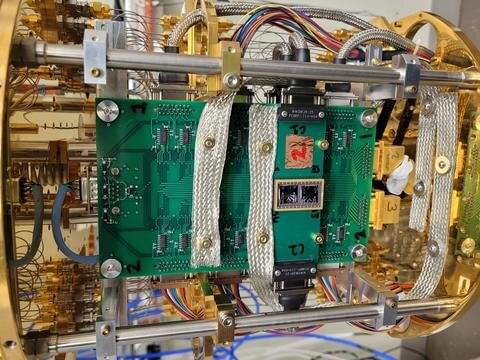Elon Musk has a knack for accomplishing feats that others consider improbable. From blasting rockets into space to becoming the king of the EV industry, Musk is determined to make history.
His latest passion project is Neuralink—a company that is developing a brain implant that will link the human brain directly to computers. He claims this brain-computer interface (BCI) will enable humans to carry out actions through thought alone. One of Musk’s first goals: helping paraplegics regain their independence.
But it doesn’t stop there. The company’s technology, Musk hopes, will one day not only treat but cure brain disorders and even save memories so people can revisit them like photo albums.
Artificial muscles robotic arm
Posted in cyborgs, robotics/AI
Researchers at the National Institute of Standards and Technology (NIST) have constructed and tested a system that allows commercial electronic components—such as microprocessors on circuit boards—to operate in close proximity with ultra-cold devices employed in quantum information processing. That design allows four times as much data to be output for the same number of connected wires.
In the rising excitement about quantum computing, it can be easy to overlook the physical fact that the data produced by manipulation of quantum bits (qubits) at cryogenic temperatures a few thousandths of a degree above absolute zero still has to be initiated, read out, and stored using conventional electronics, which presently work only at room temperature, several meters away from the qubits. This separation has obstructed development of quantum computing devices that outperform their classical counterparts.
That extra distance between the quantum computing elements and the external electronics requires extra time for signals to travel, which also causes signals to degrade. In addition, each (comparatively very hot) wire needed to connect the electronics to the cryogenic components adds heat, making it hard to maintain the ultracold temperature required for the quantum devices to work.
In a paper published on February 23, 2022 in Nature Machine Intelligence, a team of scientists at the Max Planck Institute for Intelligent Systems (MPI-IS) introduce a robust soft haptic sensor named “Insight” that uses computer vision and a deep neural network to accurately estimate where objects come into contact with the sensor and how large the applied forces are. The research project is a significant step toward robots being able to feel their environment as accurately as humans and animals. Like its natural counterpart, the fingertip sensor is very sensitive, robust, and high-resolution.
The thumb-shaped sensor is made of a soft shell built around a lightweight stiff skeleton. This skeleton holds up the structure much like bones stabilize the soft finger tissue. The shell is made from an elastomer mixed with dark but reflective aluminum flakes, resulting in an opaque grayish color that prevents any external light finding its way in. Hidden inside this finger-sized cap is a tiny 160-degree fish-eye camera, which records colorful images, illuminated by a ring of LEDs.
When any objects touch the sensor’s shell, the appearance of the color pattern inside the sensor changes. The camera records images many times per second and feeds a deep neural network with this data. The algorithm detects even the smallest change in light in each pixel. Within a fraction of a second, the trained machine-learning model can map out where exactly the finger is contacting an object, determine how strong the forces are, and indicate the force direction. The model infers what scientists call a force map: It provides a force vector for every point in the three-dimensional fingertip.
Identifying a malfunction in the nation’s power grid can be like trying to find a needle in an enormous haystack. Hundreds of thousands of interrelated sensors spread across the U.S. capture data on electric current, voltage, and other critical information in real time, often taking multiple recordings per second.
Researchers at the MIT-IBM Watson AI Lab have devised a computationally efficient method that can automatically pinpoint anomalies in those data streams in real time. They demonstrated that their artificial intelligence method, which learns to model the interconnectedness of the power grid, is much better at detecting these glitches than some other popular techniques.
Because the machine-learning model they developed does not require annotated data on power grid anomalies for training, it would be easier to apply in real-world situations where high-quality labeled datasets are often hard to come by. The model is also flexible and can be applied to other situations where a vast number of interconnected sensors collect and report data, like traffic monitoring systems. It could, for example, identify traffic bottlenecks or reveal how traffic jams cascade.
Pure lithium metal is a promising replacement for the graphite-based anodes currently used in electric vehicle batteries. It could tremendously reduce battery weights and dramatically extend the driving range of electric vehicles relative to existing technologies. But before lithium metal batteries can be used in cars, scientists must first figure out how to extend their lifetimes.
A new study led by Peter Khalifah—a chemist at the U.S. Department of Energy’s (DOE) Brookhaven National Laboratory and Stony Brook University—tracked lithium metal deposition and removal from a battery anode while it was cycling to find clues as to how failure occurs. The work is published in a special issue of the Journal of the Electrochemical Society honoring the contributions of Nobel Prize-winning battery researcher John Goodenough, who like Khalifah is a member of the Battery 500 Consortium research team.
“In a good battery, the rate of lithium plating (deposition) and stripping (removal) will be the same at all positions on the surface of electrodes,” Khalifah said. “Our results show that it’s harder to remove lithium at certain places, which means there are problems there. By identifying the cause of the problems, we can figure out how to get rid of them and make better batteries with higher capacities and longer lifetimes.”








